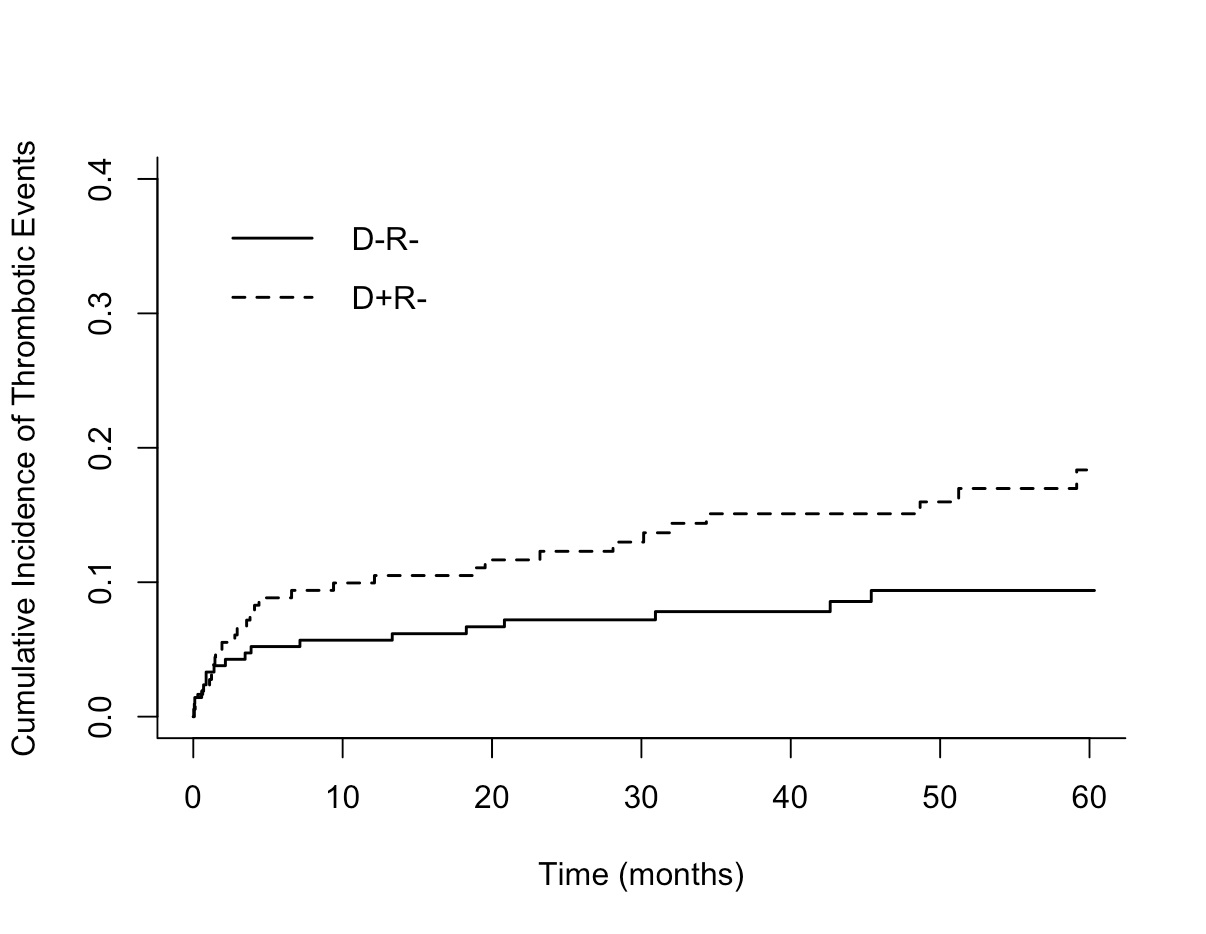Donor Graft CMV Serostatus Influences the Development of Arterial and Venous Vascular Events in Seronegative Recipients after Organ Transplantation
University of Alberta, Edmonton, AB, Canada
Meeting: 2019 American Transplant Congress
Abstract number: 331
Keywords: Cytomeglovirus
Session Information
Session Name: Concurrent Session: Breakthroughs in Cytomegalovirus
Session Type: Concurrent Session
Date: Monday, June 3, 2019
Session Time: 4:30pm-6:00pm
 Presentation Time: 4:42pm-4:54pm
Presentation Time: 4:42pm-4:54pm
Location: Ballroom A
*Purpose: Cytomegalovirus (CMV) is the most common opportunistic pathogen following solid organ transplantation (SOT) and is a major cause of morbidity and mortality. CMV infection has been associated with increased incidence of arterial and venous thrombotic events (TE). The aim of this study is to investigate the impact of CMV exposure at transplantation on the rate of post-transplant TEs.
*Methods: We conducted a retrospective study of patients transplanted at the University of Alberta Hospital, Edmonton, between July 2005 and October 2017. We included adult SOT recipients that were CMV-seronegative at transplantation who received a graft from either a seropositive (CMV D+/R-) or seronegative donor (CMV D-/R-). Among other variables, we recorded all the arterial and venous TEs pre- and post-transplantation.
*Results: We included a total of 392 SOT recipients, 181 (46%) CMV D+/R- and 211 (54%) CMV D-/R-, with a mean age of 47 years and 297 (76%) males. There was a total of 151 (39%) liver, 188 (48%) kidney, 45 (11%) pancreas and 8 (2%) other type of transplants. Patients in the CMV D+/R- cohort were slightly older (51 versus 48 years, p=0.032) but other variables, including cardiovascular risk factors and pre-transplant TEs, were similar. Post-transplant primary CMV infection occurred in 108 (60%) recipients in the CMV D+/R- group with only 2 recipients (< 1%) in the CMV D-/R- group. Overall, TEs occurred in 38 (21%) patients in the CMV D+/R- group versus 22 (10%) in the CMV D-/R- group which indicates a twice higher cumulative incidence at 5 years in the former group (18% versus 9%, respectively). Among CMV D+/R- recipients, the rate of TEs at 5 years was not significantly different between patients with and without CMV infection including those with high (≥ 4logIU/mL), low (<4logIU/mL) or negative CMV DNAemia. After adjusting for potential confounders with a Cox-regression model, CMV D+/R- at transplantation was independently associated with increased risk of TEs over 5 years (HR 1.95, 95% CI 1.096-3.482).
*Conclusions: CMV D+/R- status at transplantation is associated with increased risk of thrombotic events post-transplantation.
Figure 1. Competing event (death) analysis of cumulative incidence of TEs in CMV D+/R- versus CMV D-/R- at 5 years (p = 0.0275).
To cite this abstract in AMA style:
Belga S, MacDonald C, Chiang D, Kabbani D, Shojai S, Abraldes JG, Cervera C. Donor Graft CMV Serostatus Influences the Development of Arterial and Venous Vascular Events in Seronegative Recipients after Organ Transplantation [abstract]. Am J Transplant. 2019; 19 (suppl 3). https://atcmeetingabstracts.com/abstract/donor-graft-cmv-serostatus-influences-the-development-of-arterial-and-venous-vascular-events-in-seronegative-recipients-after-organ-transplantation/. Accessed December 15, 2025.« Back to 2019 American Transplant Congress

